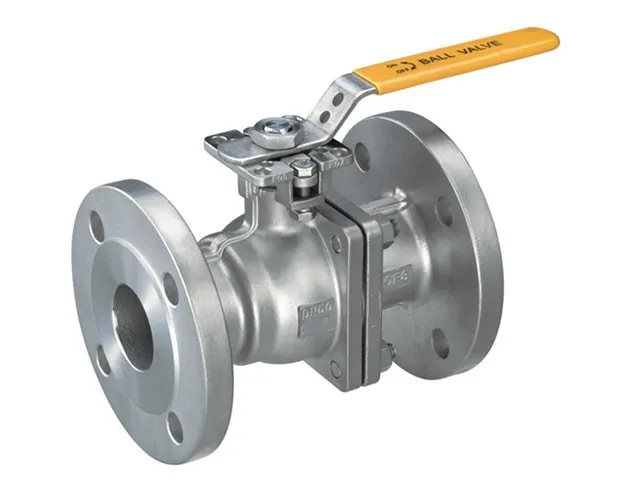Optimizing Flow Control Techniques for Butterfly Valves in Industrial Applications
Butterfly Valve Flow Control An In-Depth Analysis
Butterfly valves have carved a niche for themselves in various industries due to their simple design, versatility, and efficiency in flow control. These devices play a critical role in regulating the flow of fluids in pipelines, making them indispensable components in sectors such as water supply, wastewater treatment, chemical processing, and HVAC systems.
Understanding Butterfly Valves
A butterfly valve consists of a rotating disc, which is mounted on a central shaft. When the valve is closed, the disc blocks the flow, while rotating it a quarter turn allows fluid to pass through. This straightforward mechanism makes butterfly valves ideal for applications requiring rapid on/off operation or flow regulation. They are available in various designs, including concentric, eccentric, and triple offset configurations, each suitable for different operational demands.
Advantages of Butterfly Valves
One of the main benefits of butterfly valves is their compact design, which requires less space than traditional gate or globe valves. This space-saving aspect is particularly beneficial in installations where pipeline real estate is at a premium. Furthermore, butterfly valves are lightweight, making them easier to handle and install, thereby reducing installation costs.
Another advantage is their cost-effectiveness. Compared to other valve types, butterfly valves are generally less expensive and offer long service life with minimal maintenance. Their design allows for a wide range of flow control, from fully open to fully closed positions, making them highly adaptable to various flow requirements.
Flow Control Mechanism
The flow control capability of butterfly valves is primarily attributed to the position of the disc. When the valve is partially open, the disc constricts the flow path, creating a pressure drop. This feature allows operators to regulate the flow rate effectively. The degree of disc rotation correlates with the flow capacity; thus, precise adjustments can be made to meet specific operational needs.
butterfly valve flow control

Flow control through butterfly valves can be classified into two categories throttling and shutoff. Throttling involves adjusting the valve position to control the flow rate continuously. This is especially useful in processes that require a stable flow, such as chemical dosing systems. Shutoff, on the other hand, is a simple open/close action for applications that require the immediate cessation of flow, like fire suppression systems.
Applications of Butterfly Valves
Butterfly valves are widely used across various industries. In water treatment plants, they control the flow of water through different processes, ensuring optimal treatment performance. In chemical processing, these valves manage the flow of corrosive and viscous fluids, guaranteeing safety and efficiency.
In HVAC systems, butterfly valves help regulate air flow within ductwork, contributing to energy efficiency and comfort within buildings. Their ability to maintain tight seals when closed minimizes leakage, thereby enhancing overall system performance.
Considerations for Choosing Butterfly Valves
When selecting butterfly valves for specific applications, several factors must be considered. The choice of materials is crucial, especially in corrosive environments. Common materials include stainless steel, cast iron, and PVC, each offering distinct benefits.
Another important consideration is the valve’s pressure and temperature ratings, as well as the type of actuator used for operation. Pneumatic, electric, and manual actuators can be employed based on the required control precision and operational environment.
Conclusion
In summary, butterfly valves offer an efficient and effective solution for flow control in various applications. Their design facilitates ease of use, reliability, and cost-effectiveness. As industries continue to evolve and demand more sophisticated fluid management solutions, the importance of butterfly valves and their contributions to system efficiency cannot be overstated. Understanding their functions and applications allows for better integration into existing systems, ultimately leading to enhanced performance and sustainability. Whether in water treatment, chemical processing, or HVAC systems, butterfly valves remain a vital component in modern engineering and operations.
-
The Versatility of Ball Valves in Fluid Control SystemsNewsJun.10,2025
-
The Practical Benefits of Centerline Butterfly ValvesNewsJun.10,2025
-
The Benefits of Bellows Seal Globe Valves for Industrial SystemsNewsJun.10,2025
-
The Advantages of Offset Butterfly ValvesNewsJun.10,2025
-
Ductile Gate Valves: Strong, Reliable, and Essential for Every SystemNewsJun.10,2025
-
Cast Iron Gate Valves: A Reliable Solution for Every SystemNewsJun.10,2025
-
Why Choose a Brass Gate Valve for Superior Performance and DurabilityNewsMay.09,2025




